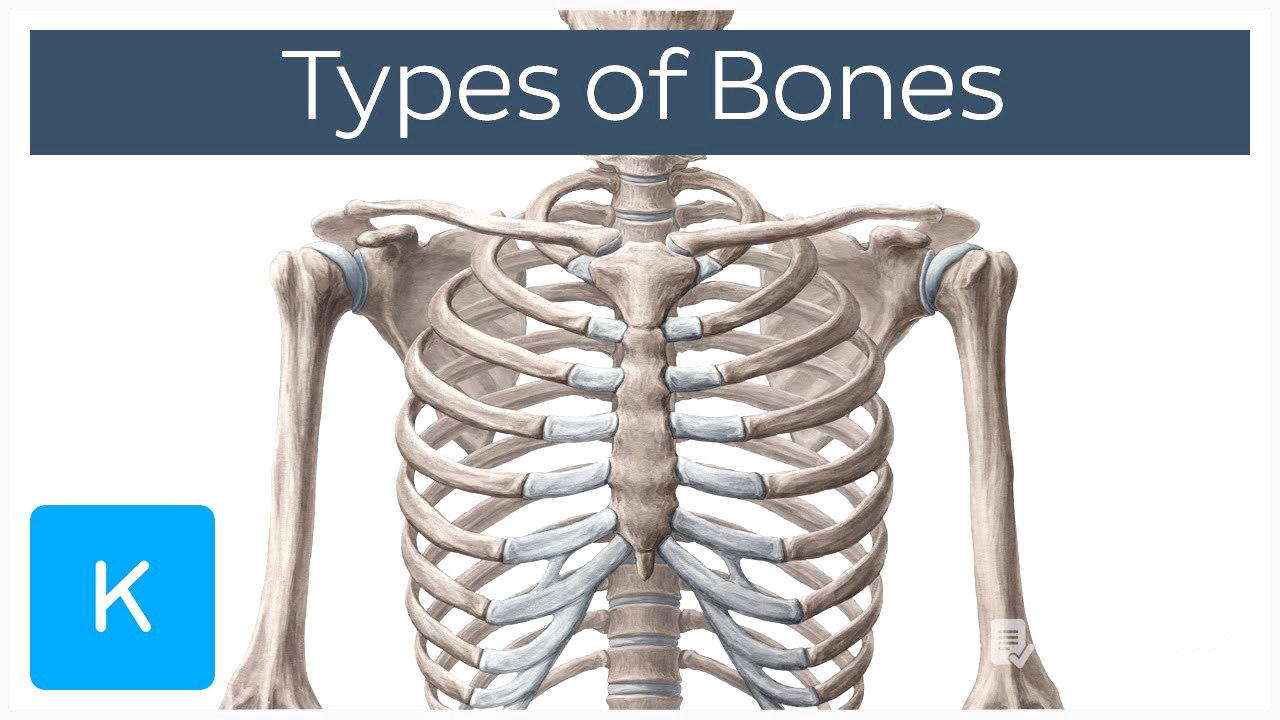TLDR;
This video provides an overview of the five types of bones found in the human skeleton: long, short, flat, sesamoid, and irregular. It explains how each type is identified based on its form, development (endochondral or membranous ossification), and general shape. The video details the anatomical structure and examples of each bone type, offering a comprehensive guide to understanding bone classification.
- Long bones have a complex anatomy with a diaphysis, epiphysis, and metaphysis.
- Short bones consist of a thin layer of compact bone covering spongy bone.
- Flat bones feature two layers of compact bone sandwiching spongy bone and bone marrow.
- Irregular bones are categorized by their bone content rather than shape.
- Sesamoid bones protect tendons from wear and reduce friction.
Introduction to Bone Types [0:00]
The tutorial introduces the five types of bones found in the human skeleton: long, short, flat, sesamoid, and irregular. These types are identified by their forms, either endochondral or membranous, and by their general shape. The video will explore each type in detail, starting with the most complex, long bones.
Long Bones [0:38]
Long bones develop via endochondral ossification, where a hyaline cartilage plate is slowly replaced by bone. A shaft, or diaphysis, connects two ends, each known as the epiphysis. The marrow cavity is enclosed by the diaphysis, which consists of thick, compact bone. The epiphysis is mainly spongy bone covered by a thin layer of compact bone. The articular ends participate in joints, and the metaphysis connects the diaphysis and epiphysis at the neck of the bone, serving as the site of growth during development. Examples of long bones include the humerus, ulna, radius, fibula, tibia, femur, metacarpals, and phalanges.
Short Bones [1:38]
Short bones consist of a thin external layer of compact bone covering a vast spongy bone and marrow, resulting in a more or less cuboid shape. The carpal and tarsal bones fall into this category.
Flat Bones [1:54]
Flat bones feature two layers of compact bone covering both spongy bone and bone marrow space. They grow by replacing connective tissue, and fibrocartilage covers their articular surfaces. This group includes the skull bones, ribs, sternum, and scapulae. A thin layer of compact bone covers a mass of mostly spongy bone.
Irregular Bones [2:25]
Irregular bones are not categorized by shape but by bone content and include bones of the skull, vertebrae, and hip.
Sesamoid Bones [2:40]
Sesamoid bones are found at the end of long bones in the limbs where tendons cross, such as the patella bone in the knee. They protect the tendons from excess wear by developing within the tendon and reducing friction.









